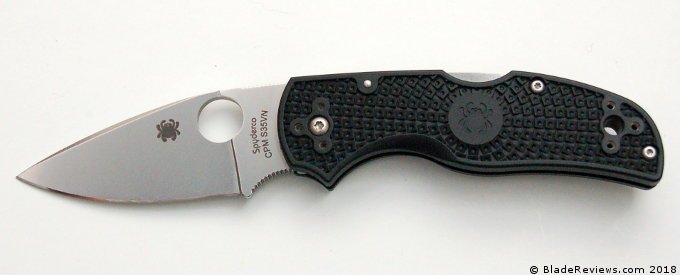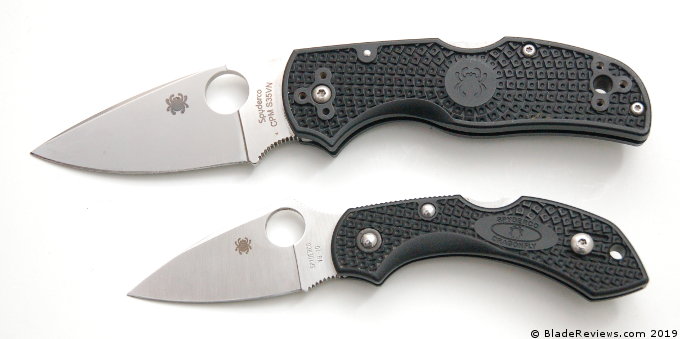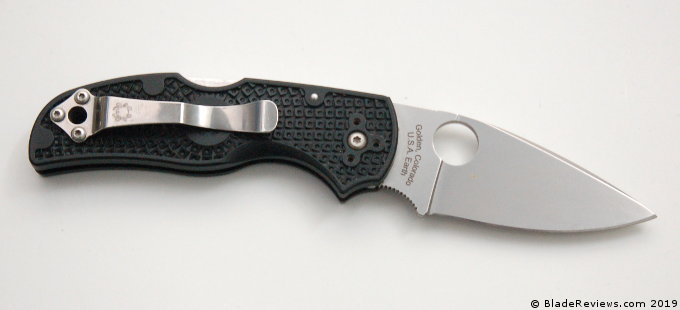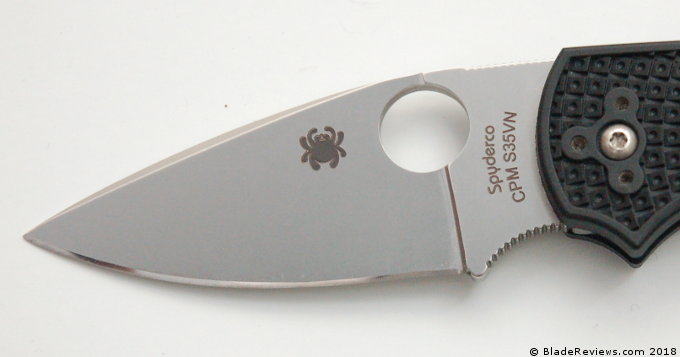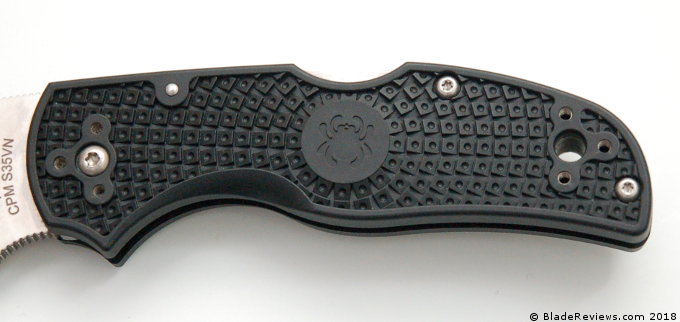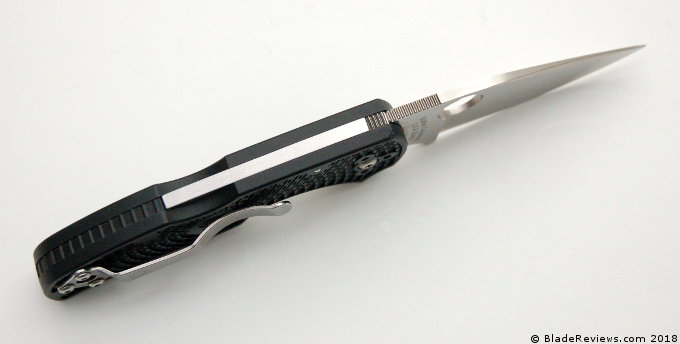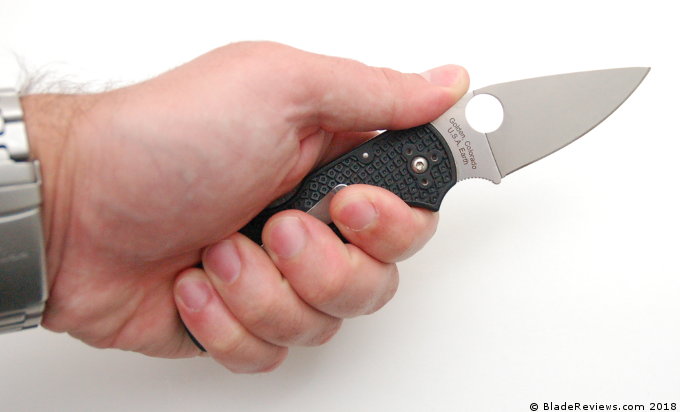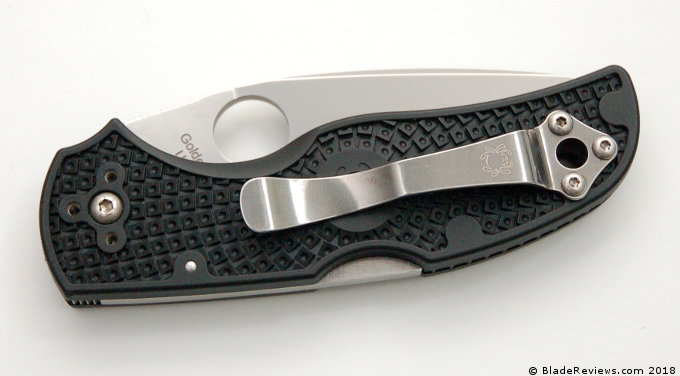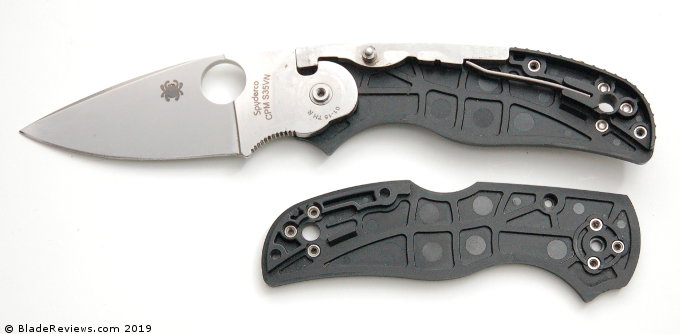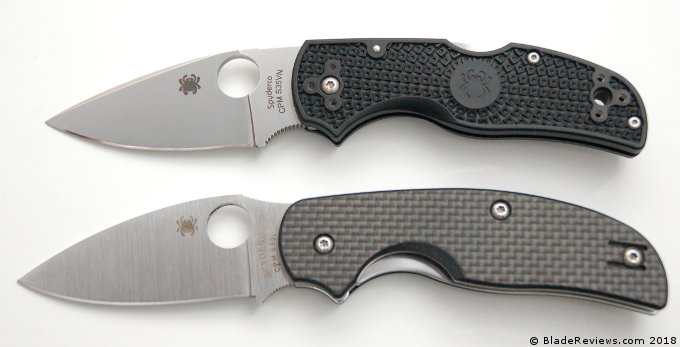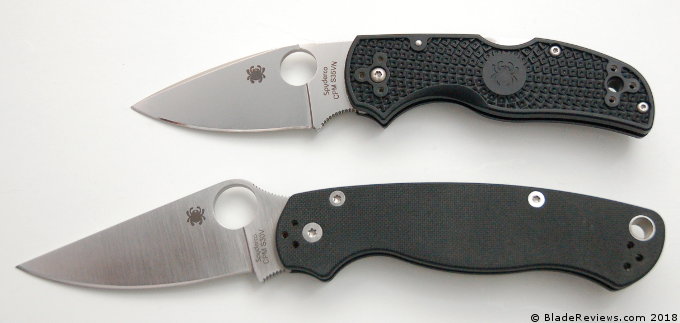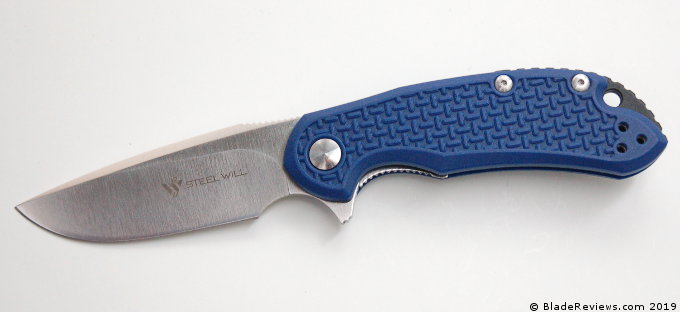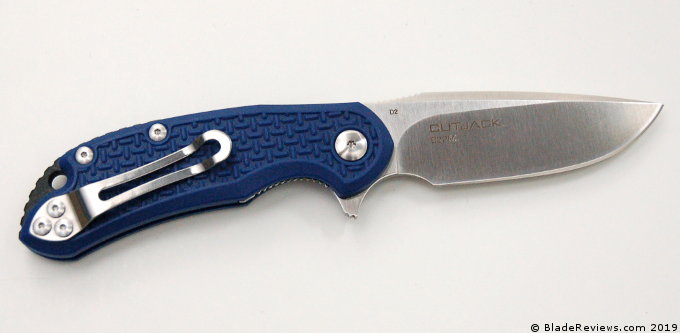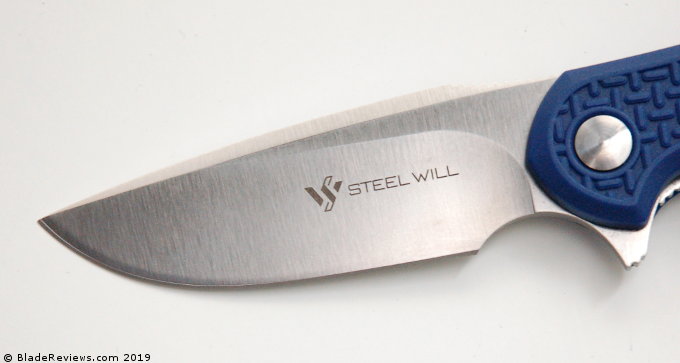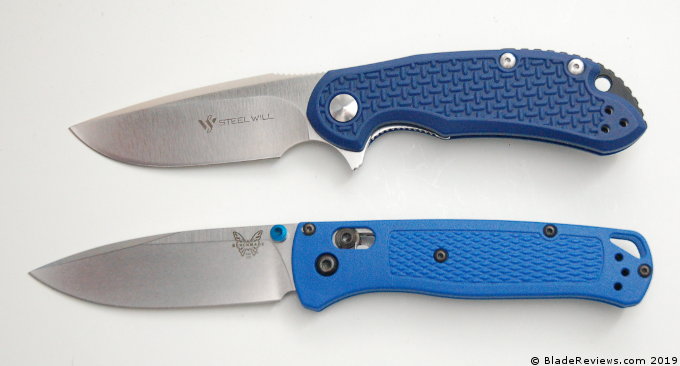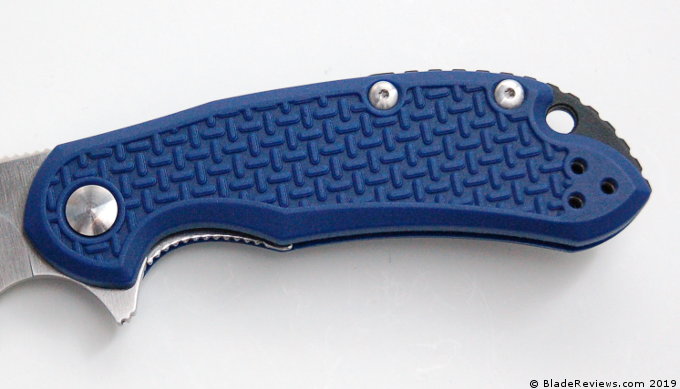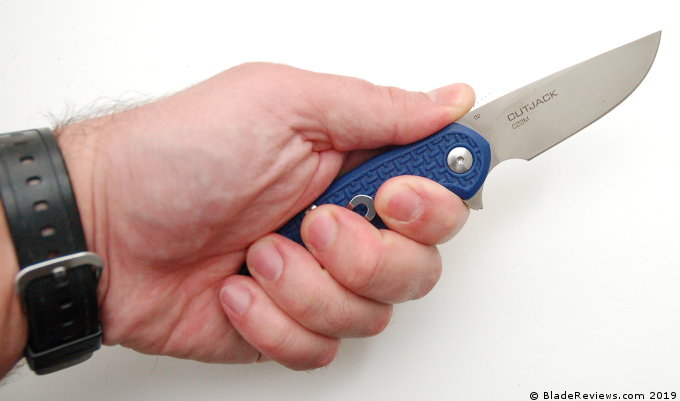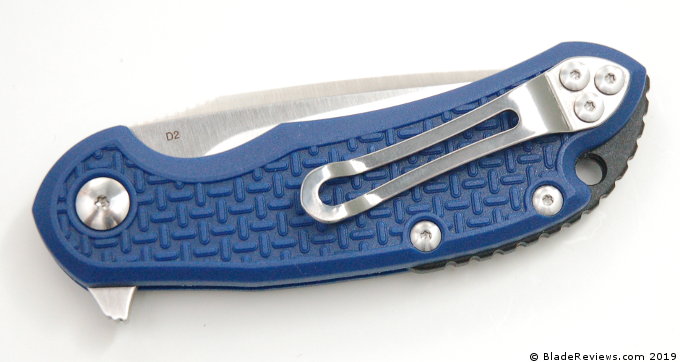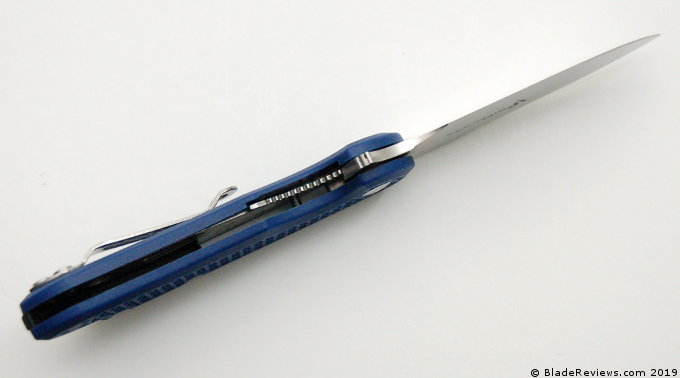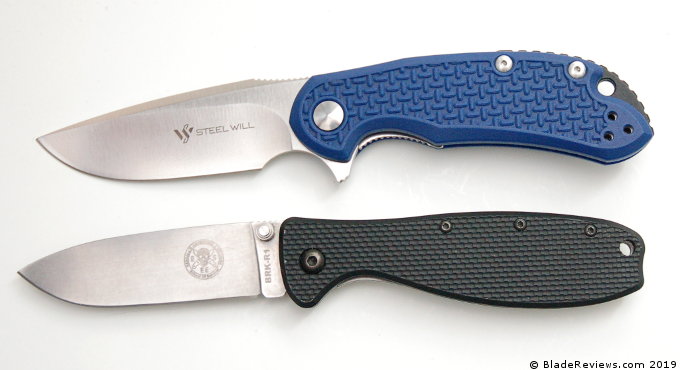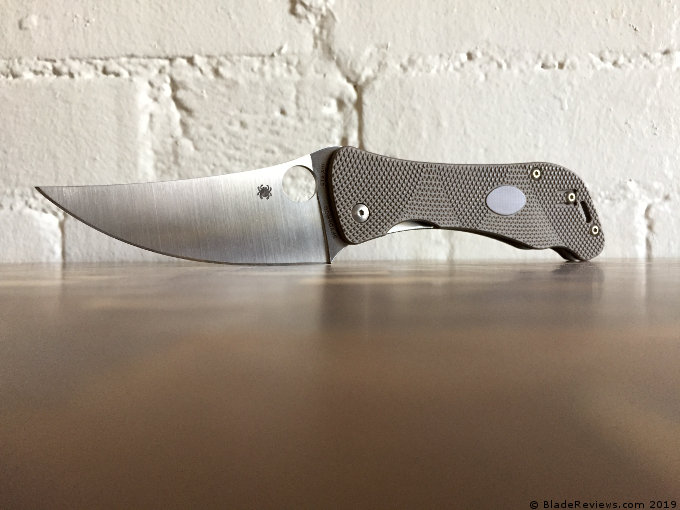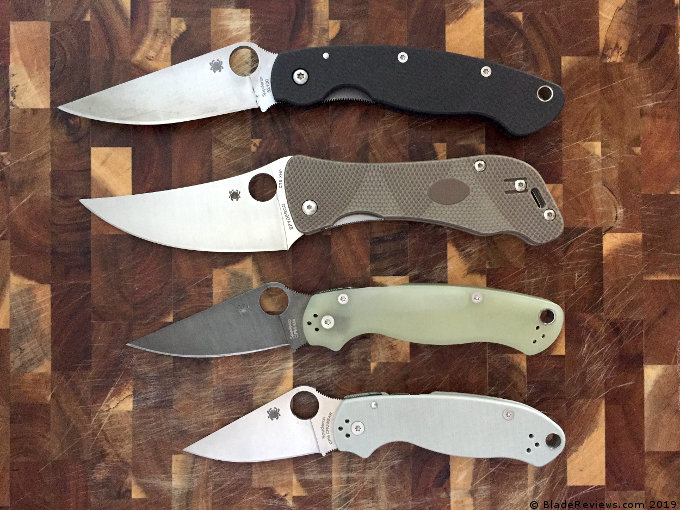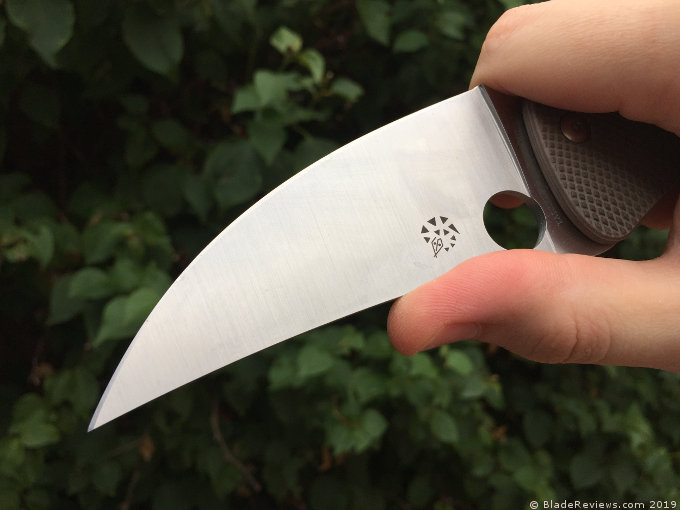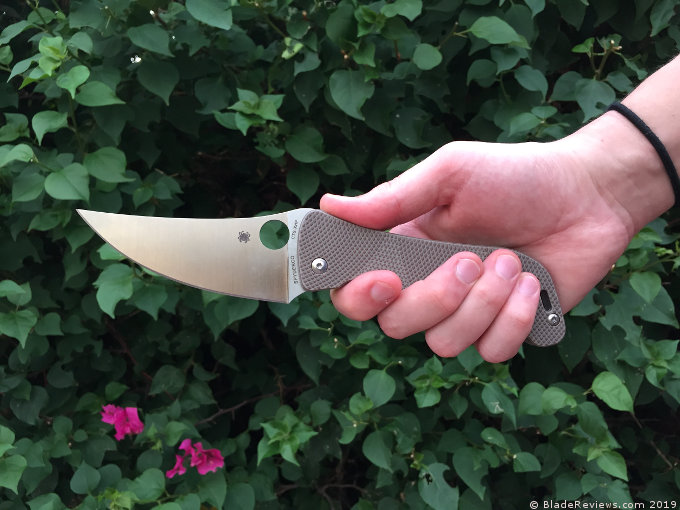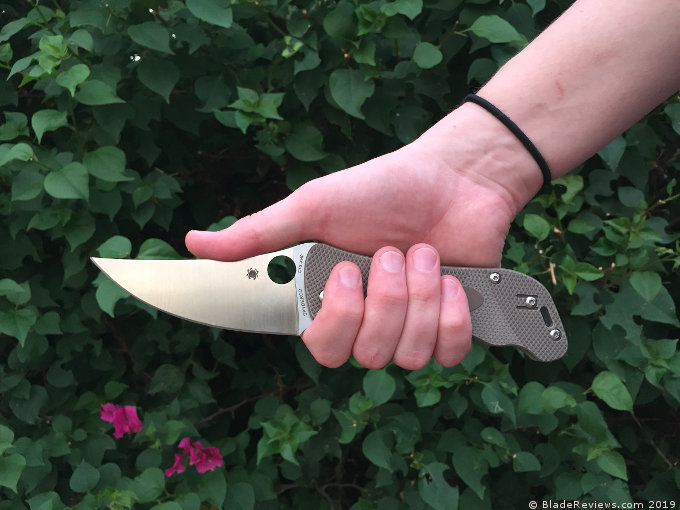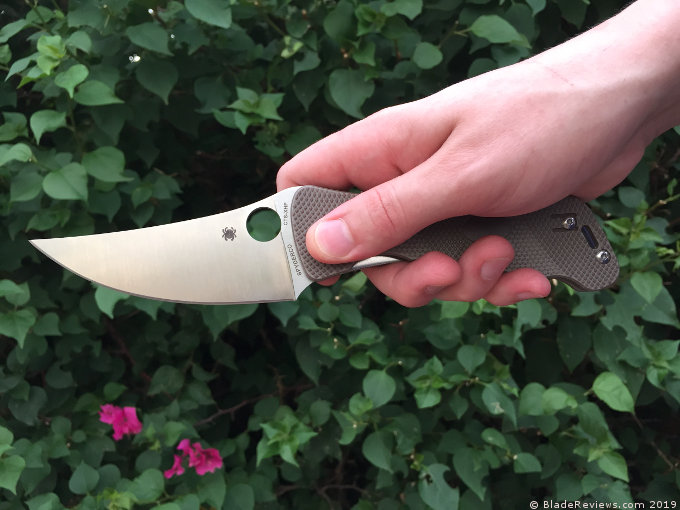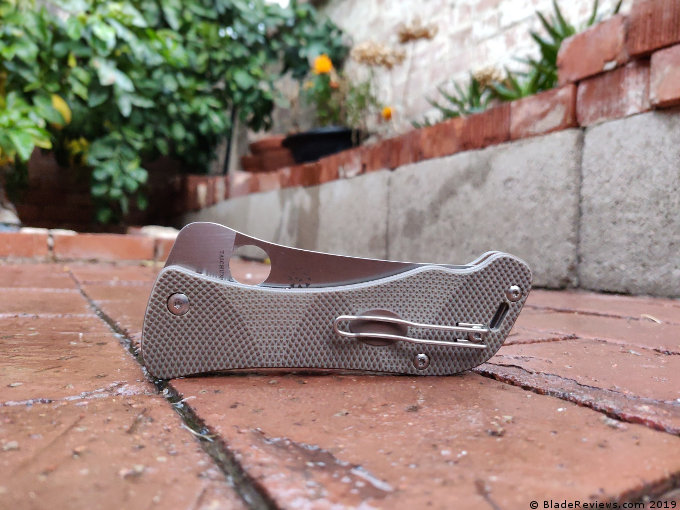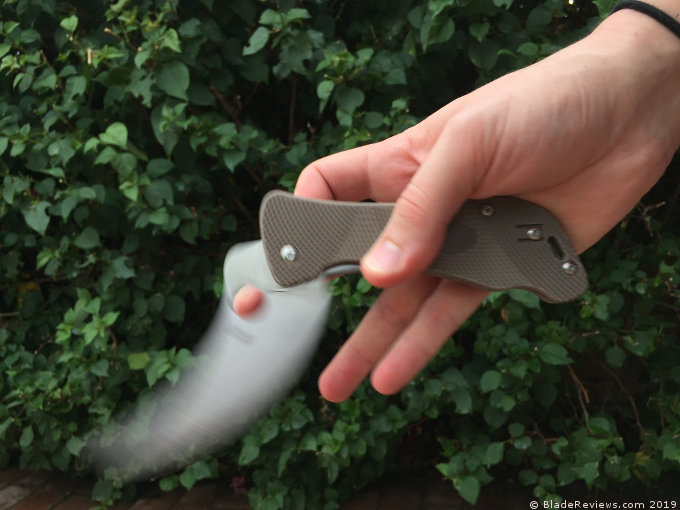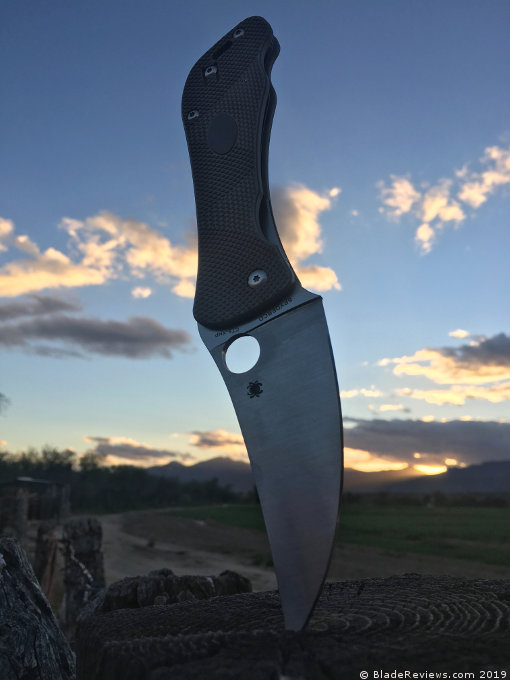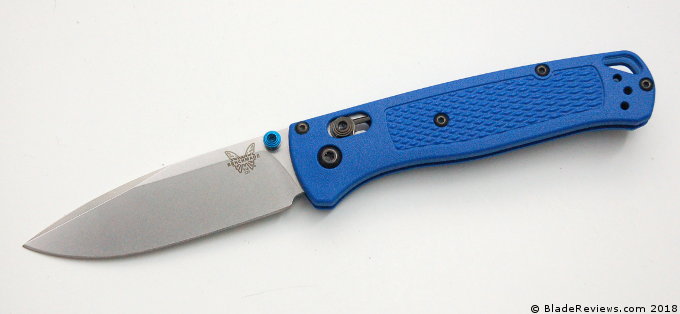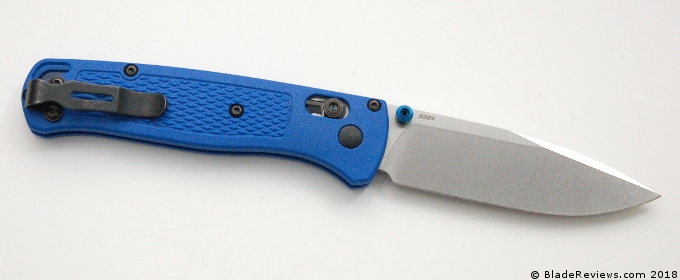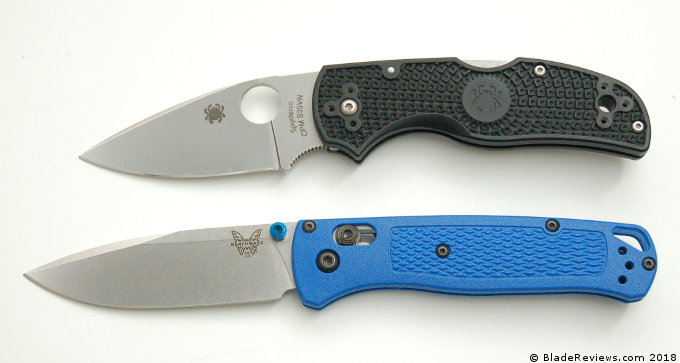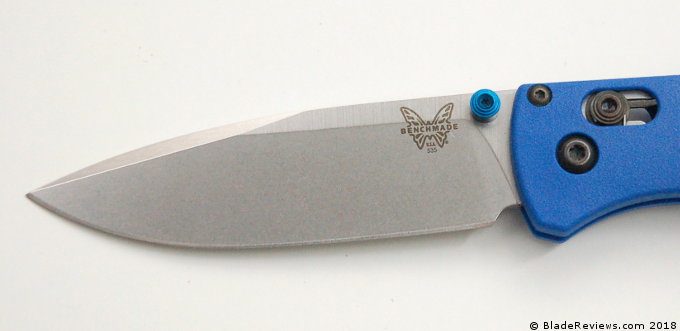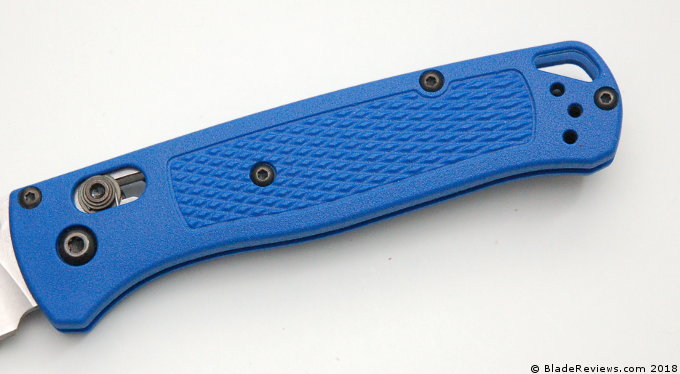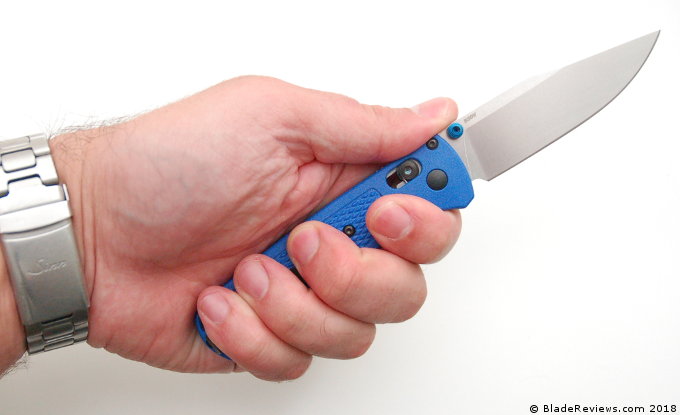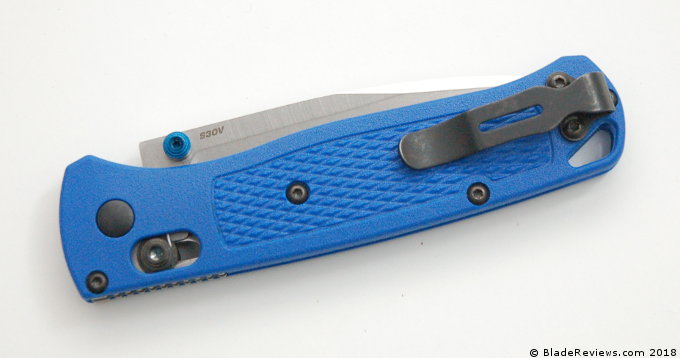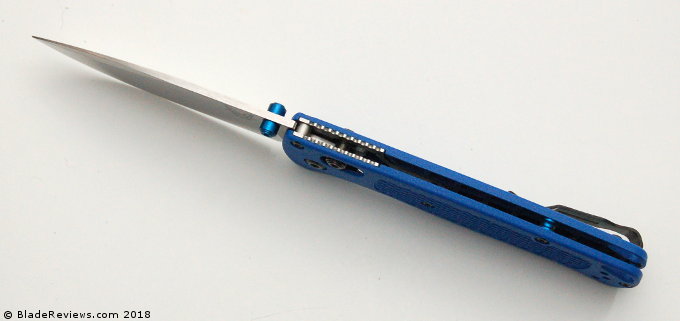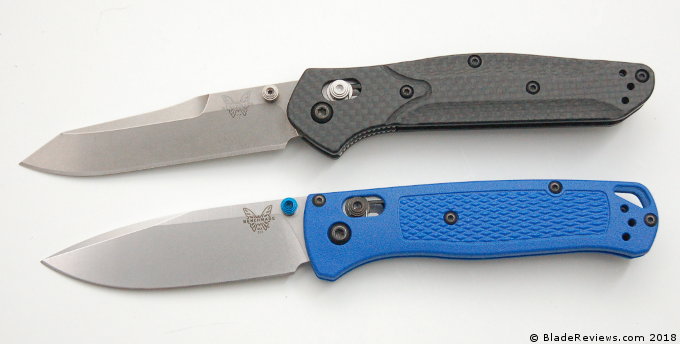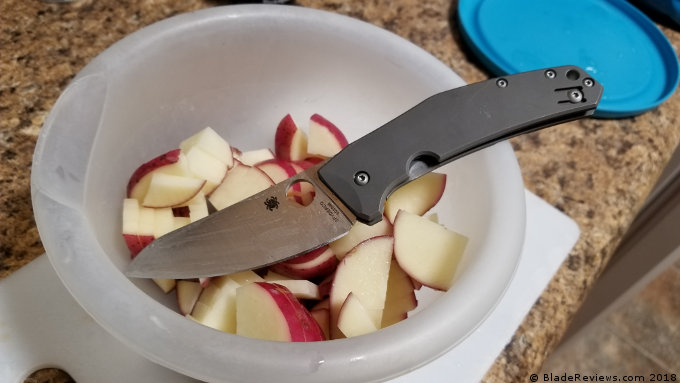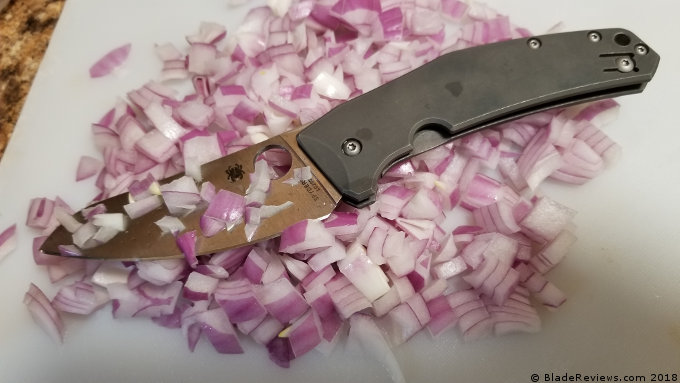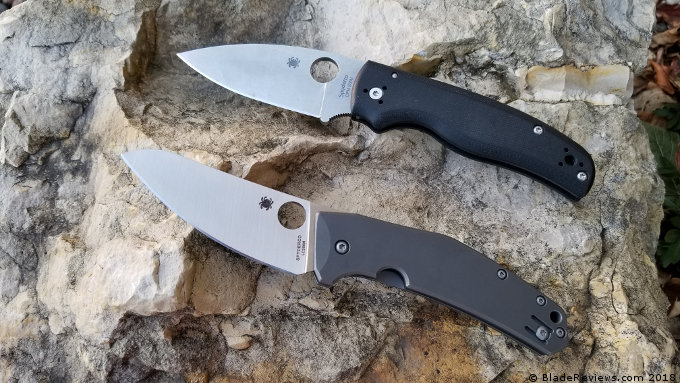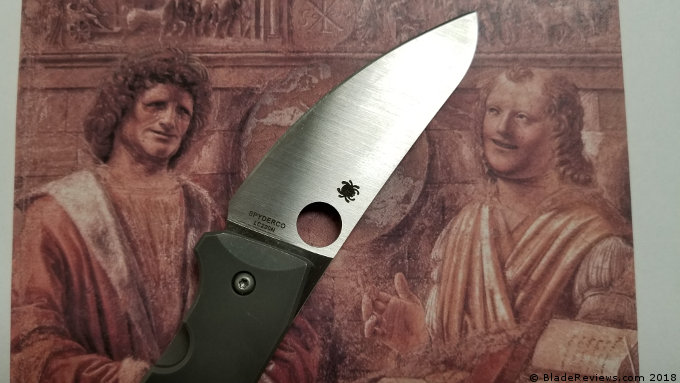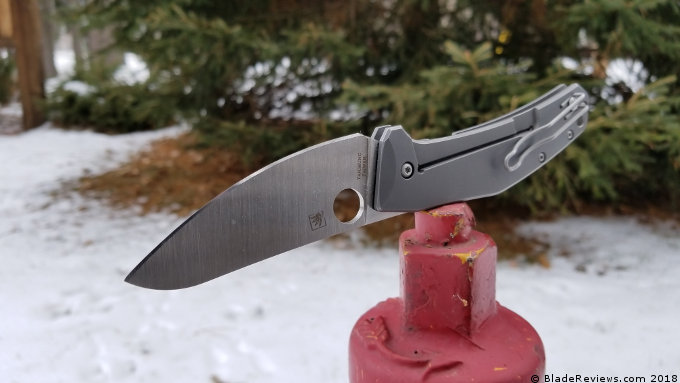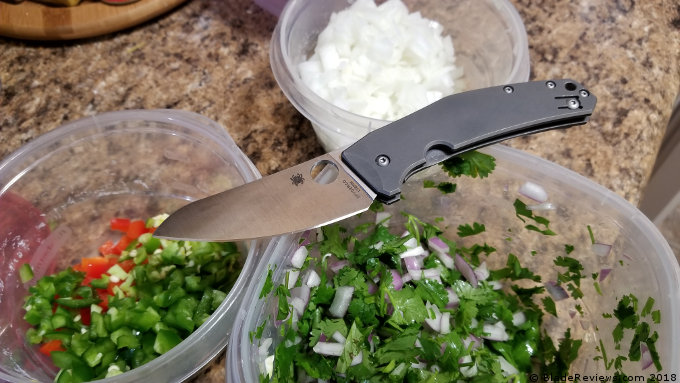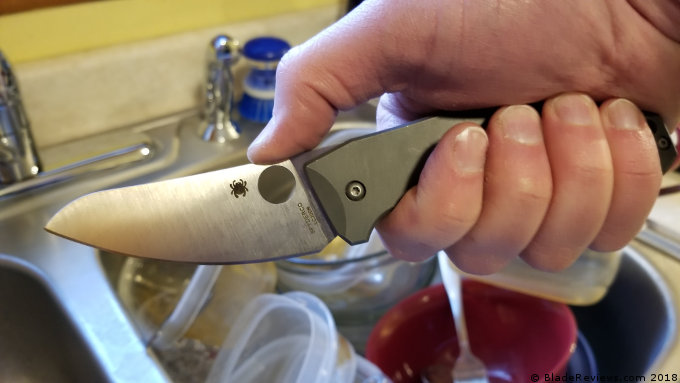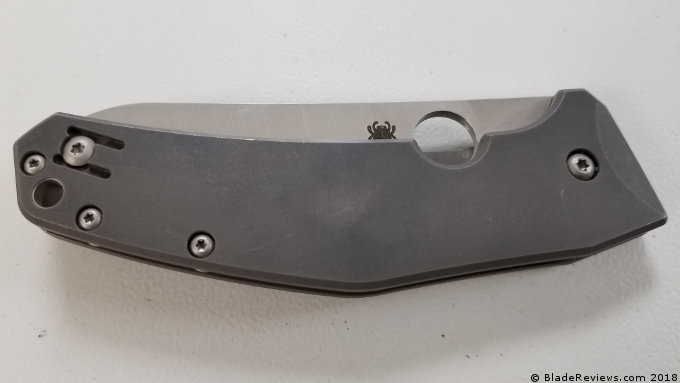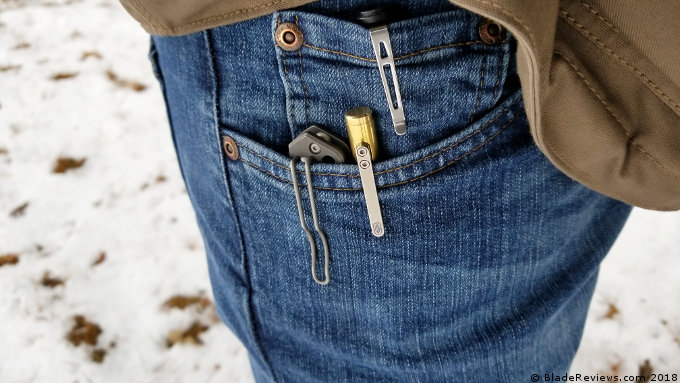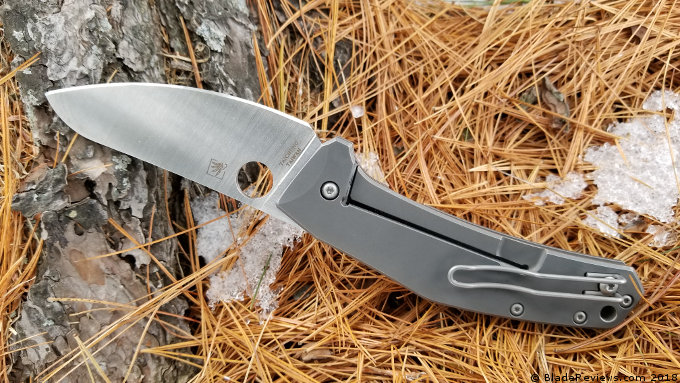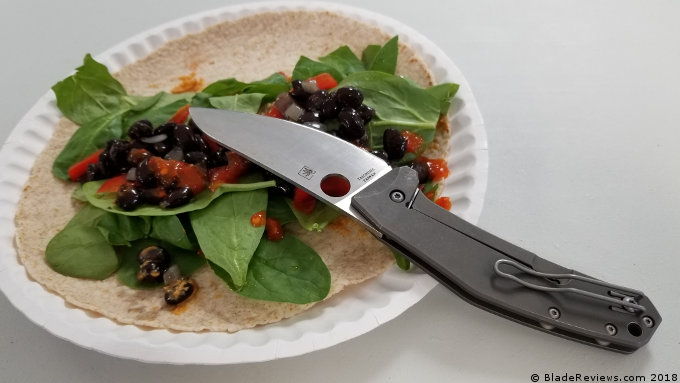The Rhino is a large folder from Tecnocut’s Viper brand. Honoring its namesake, it features an oversized frame, robust build and armored appearance. Created by long time collaborator and custom knife maker Fabrizio Silvestrelli, it has flowing considered lines and a distinct appearance.
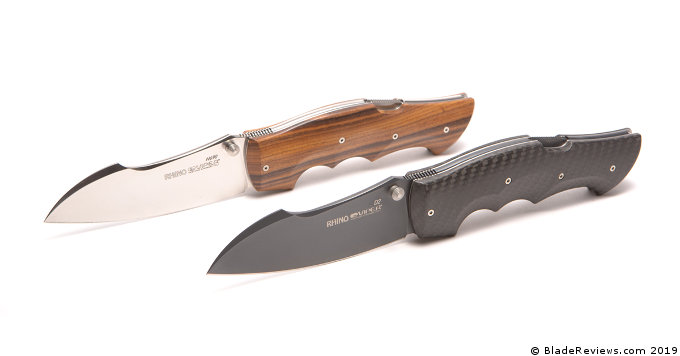
Buy the Viper Rhino at BladeHQ
General Dimensions and Blade Details
The Rhino has an over-all length of 9.96”, a 4.25″ blade, weighs between 8.6 and 9.9 oz depending on the choice of scales, and is made in Italy. Don’t kid yourself, “Rhino” was not a misnomer. This is a big knife and is designed for those seeking something, well, built like a Rhinoceros.
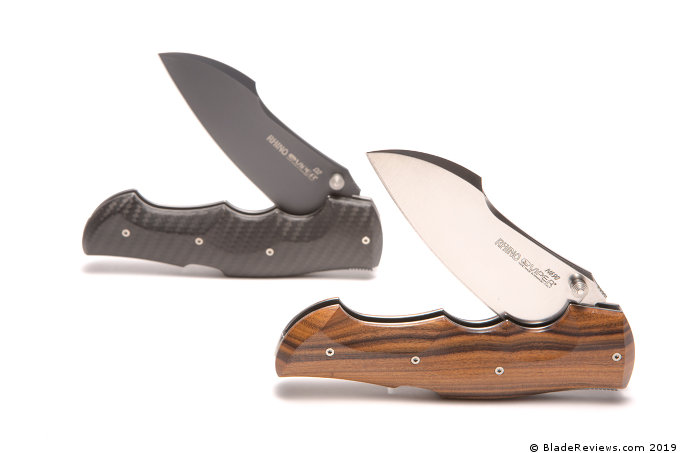
The blade has an unusual shape that sits in between a sheep’s foot and a harpoon pattern. At 4.25” and with a maximum width of 1.375” it offers a long cutting surface along with resistance against lateral stresses. The nature of the sloping spine also provides excellent tip strength.
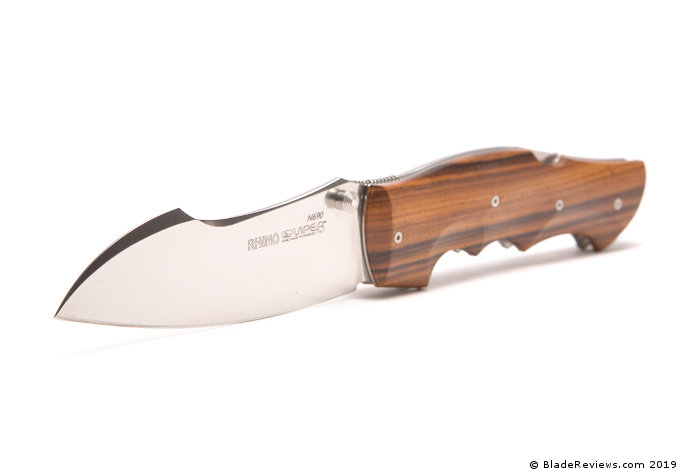
While a typical sheep’s foot blade is designed to avoid penetrating cuts, the combination of an elongated radius meeting a sloping belly results in an aggressive point. This is augmented by a swedge, improving the Rhino’s ability to perform thrust cuts. A dip after the nose-like tip adds visual interest as well as a practical place for your free hand for reinforced push cuts. The grind is a full flat with a secondary bevel. Because of the large width, the edge geometry is shallow, producing a fine edge despite the generous .157” stock.
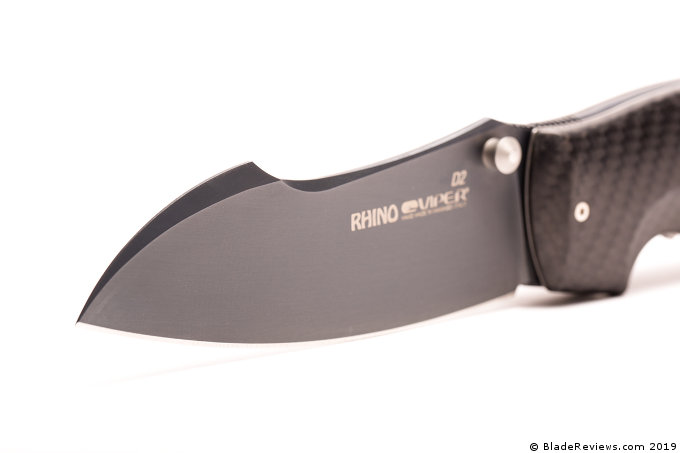
The steel used depends on the finish. Satin blades are stainless Böhler N690 while the charcoal blades are D2 achieving their corrosion resistance through the applied PVD coating.
Both blade steels are good options and provide solid value for money. N690 in particular offers an excellent combination of stain resistance, ease of sharpening, and edge retention. D2 has a reputation for being more finicky, as it’s a tough semi-stainless steel that can be more challenging to sharpen, but it’s a good choice for harder use applications.
Handle, Ergonomics, and Pocket Clip
The handle is substantial in both length and width. At 5.5” it will easily accommodate medium and large sized hands with or without gloves. The construction is closed with scaled, full stainless liners. You have your choice of carbon fiber or cocobolo handle scales.
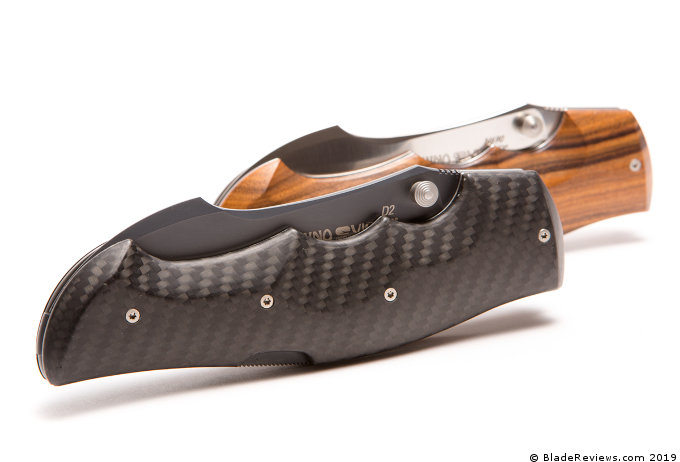
Designed for maximum retention, there are three distinct finger grooves that lock your hand in place. A slight flare on both sides of the inside edge prevent slipping in either direction. The back side is convex and nests in the palm comfortably. The back spacer is rounded adding style and avoiding hot spots while an adequately jimped thumb ramp provides extra control and feedback. Another run of aggressive, file-like jimping can be found on the lock release leaver for easy disengagement.
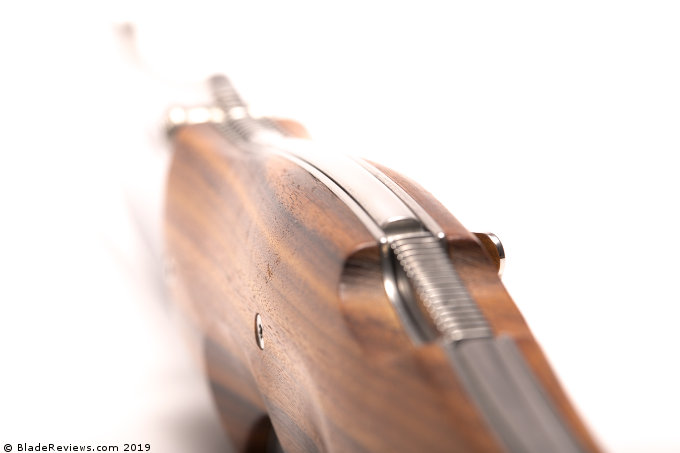
Over-all the ergonomics are excellent. While several people don’t like finger groves I personally think they work well here. The grip is very secure. A full, natural feeling in hand is partly achieved by a palm swell equally .83” (21mm) at its apex. This could be somewhat of a downside when considering pocket carry as the knife tends to hog space. Even though the clip is deep riding, the ornate appearance along with the handles bulge might generate some unwanted attention. Is that a Rhino in your pocket….?
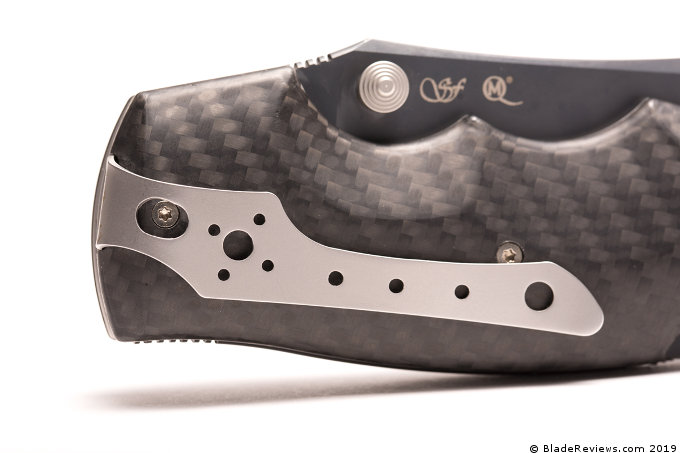
As an additional carry option there is a recessed lanyard slot in the pommel. I’m a fan of these as it keeps everything clean looking and orients your lanyard in a sensible direction. It would be nice if Viper also included a MOLLE compatible belt sheath. I could see a folder this size benefiting from the ability to carry it on a bag, vest or belt straight out of the box.
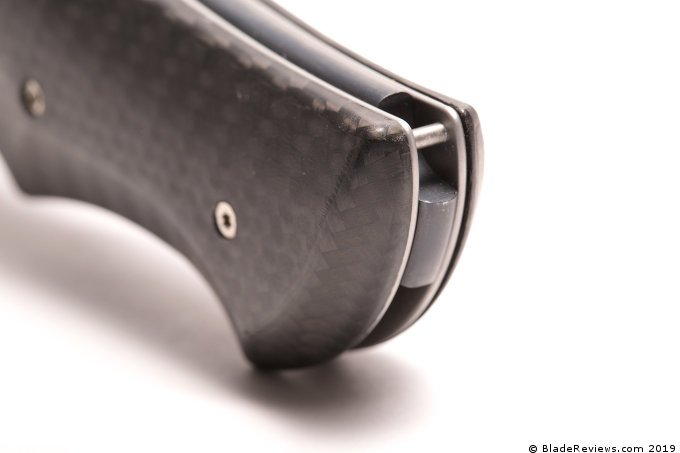
Deployment and Lockup
Deployment is achieved via ambidextrous thumb studs. Phosphor Bronze washers and a finely dialed in spring tension make opening very fluid and easy. The thumb studs are large and easy to access. One downside is that the pivot is not adjustable unless you remove the handle scales. That said, I have not needed to adjust the pivot on this knife.
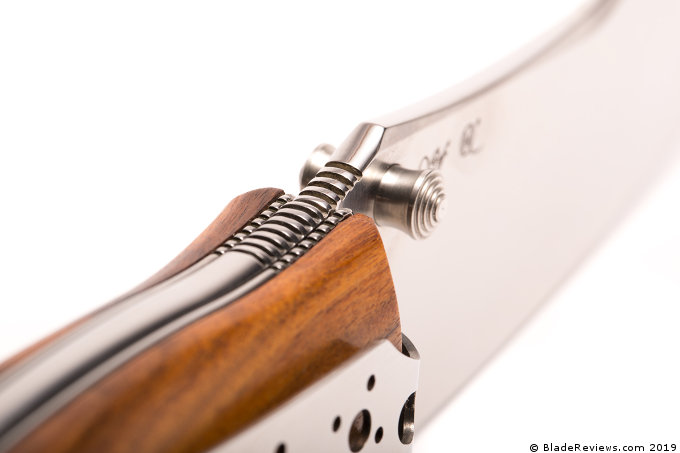
Back locking knives aren’t often associated with smooth operation however Viper has, on a number of models, achieved a perfect balance between ease of use and a reliable, tough play free lock-up. The lock is easy to disengage when you are ready to close the knife. Blade centering is perfect on these knives.
Viper Rhino Review – Final Thoughts
Everything considered the Rhino is an unusual yet attractive knife. Unapologetically oversized, it will probably appeal to a very niche market of collectors and users. If massive appeals to you, it will surely impress in the over all fit, finish and value. With a maximum price of $200.00 for the the PVD D2 and Carbon fiber model, you are getting a ton of premium materials and craftsmanship for your money. I could easily see this knife in any collection, in the bag of an outdoorsman or on the vest of a serviceman.
7Regardless of its quirks it is undeniable that the Rhino is extremely well made and functional. It’s also great that Viper, as with many of their other models, offer the Rhino in a variety of handle and blade materials accommodating a variety of tastes. To further this, it might be good for the company to consider a scaled down version as an EDC for a wider audience.
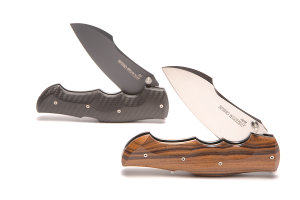
Viper Rhino – From $175.00
From: BladeHQ
- Crafted from the highest quality materials
- Built for performance and durability
- Made in Italy
Editor: I recommend purchasing the Viper Rhino at BladeHQ or Amazon. Thanks for reading.

